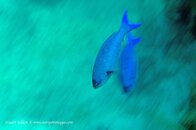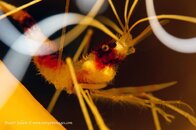Stoo
Contributor
- Messages
- 3,575
- Reaction score
- 3,882
- # of dives
- 5000 - ∞
Of course you can disagree... everyone is entitled to be wrong sometimes... ;-)Allow me to disagree.
Seriously though, TTL can do a passable job for many shots. I think it probably works pretty well if you are shooting something that fills the entire frame and is of uniform distance, colouration and even texture, from you. The light measurement will be accurate in this somewhat "static" scene.
I also agree that TTL is great in fast action shots. You didn't specifically mention this, but I think it's also great for near surface/mostly natural situations... say a pod of dolphins blasting around in the top 10'.
I will disagree about the need to be constantly fiddling with exposures. When I shoot a wreck up here, I probably only adjust stuff a couple of times for most shots. At times, I can shot every image at the same settings...
Each to their own I guess, but I think that controlling the exposure allows to be more creative by adding interesting lighting effects. As the saying goes, "A" stands for "Auto", but it also stands for "Average"...
By way of a couple of examples from a recent trip to Belize...
This first image was shot to be intentionally blurred. Creole Wrasses are constantly in motion, and I wanted to shoot them in a way that would demonstrate this. I changed my camera to "rear curtain sync" flash mode, slowed the shutter speed down to 1/20th (with the corresponding speeding up of the shutter) and panned, following the fish. It makes a cool desktop incidentally. Feel free to borrow.

This coral shrimp was way down inside a tube sponge... in the dark essentially. TTL I'm sure would have exposed the front of the sponge and there would have been a black hole inside. I was able to crank the strobes up and blast light through the SIDES of the sponge, just enough to lighten the little guy up! It's also a cool desktop, but not if you have a busy screen already.










